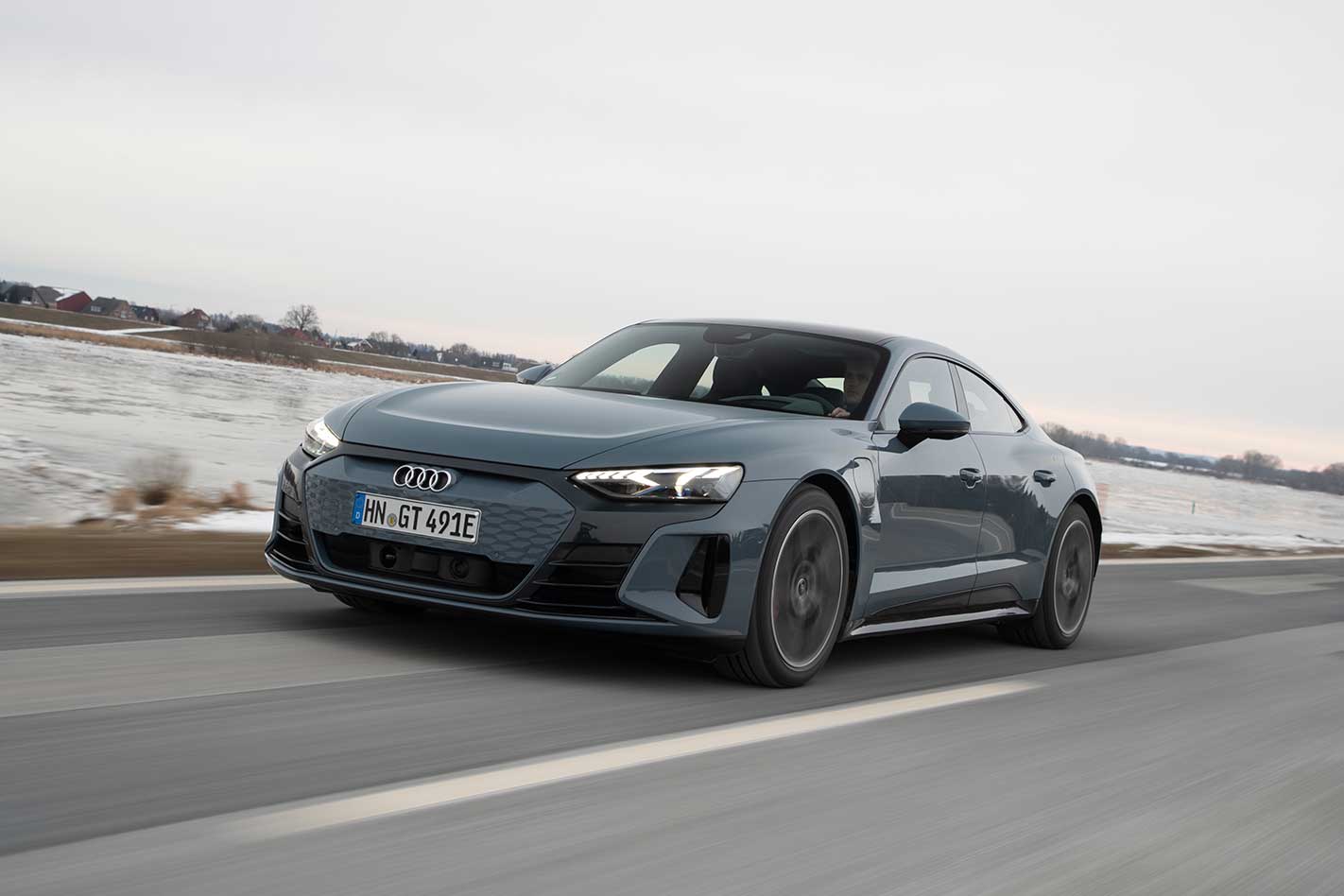
It only takes four or five of Milton Keynes’ 130 roundabouts to understand the Audi e-Tron GT quattro is a very different car to the Porsche Taycan.
Despite sharing the same bespoke electric J1 platform – developed jointly by Audi and Porsche – the second e-Tron seems to have more in common with its combustion-engined S7 stepsibling, than its electric twin from Stuttgart.
The e-Tron GT quattro we’re driving uses the same 350kW powertrain as the Taycan 4S, capable of 0-100km/h in 4.1 seconds when in a 390kW boost mode.
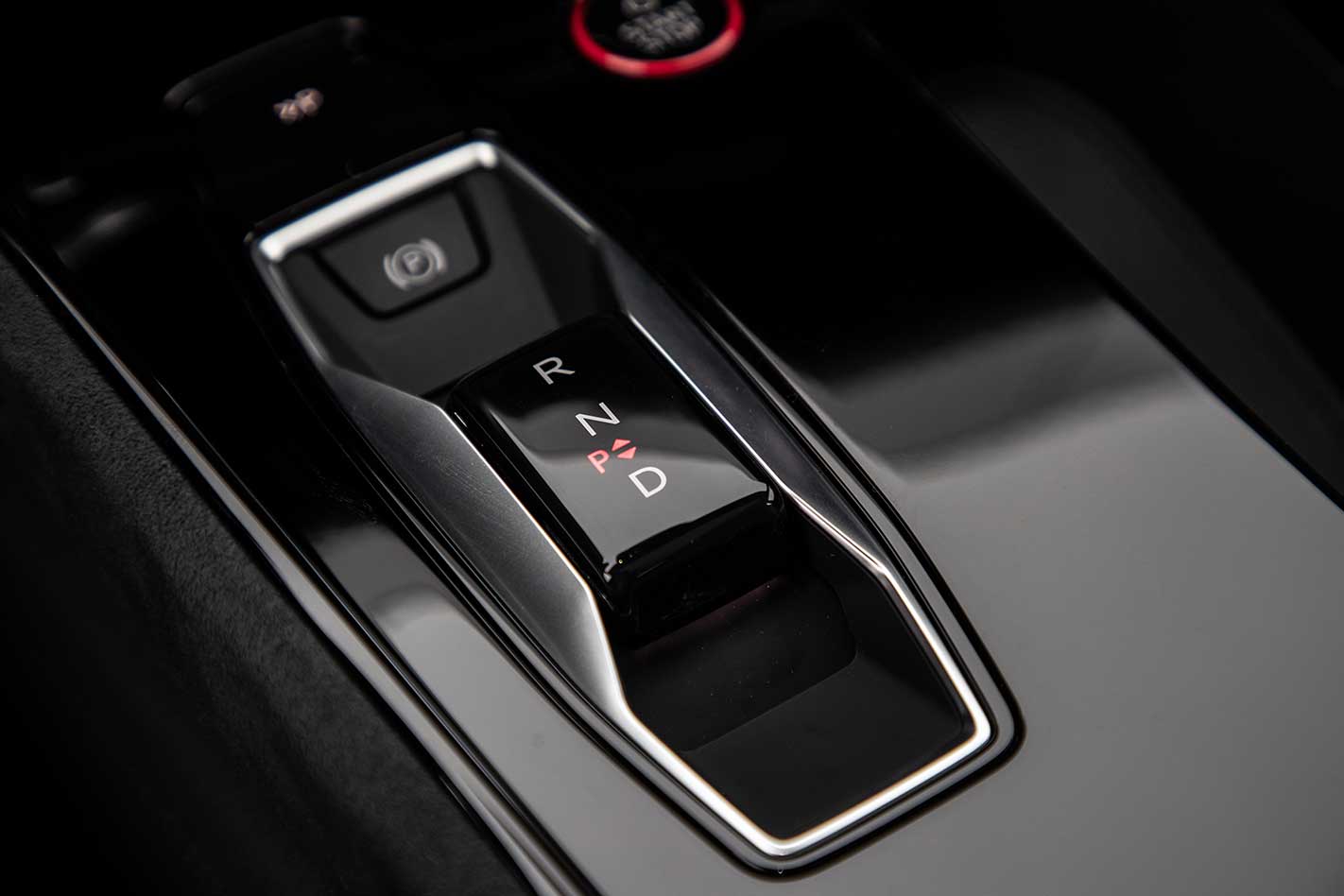
Instead, the e-Tron GT’s power is progressive, its torque flat – and it makes the Audi effortlessly accumulate speed as opposed to gaining it instantly.
UPDATE, Feb 2022: Australian E-Tron GT pricing announced
Australian pricing for the Audi E-Tron GT range has now been announced. Get all the details at the link below.
Story continues
The same is largely true of the hotter RS model that sits above it; with 440kW and 475kW in Boost mode, it has similar performance on paper to the hotter Taycan Turbo, but delivers it in a less aggressive way. Our standard quattro car, has the better range of 475km to RS’s 450 though.

Riding on air – optional in the quattro but standard in the RS – our test car was firm but well-mannered around town and pliable on B-roads. Motorways were equally quiet in the e-Tron GT; even in Dynamic mode, the Audi’s adaptive suspension soaked up bumps from expansion joints, choosing not to send them straight to the drivers’ seat.
The added comfort comes at the expense of outright handling, so body roll and dive – when you step on the optional tungsten carbide-coated steel brakes – does creep in. Empty the quattro’s power reserves on the exit of a corner, and you’ll also get the bonnet to rise a little, along with some sideways sway as Audi’s all-wheel-drive claws you down the road.
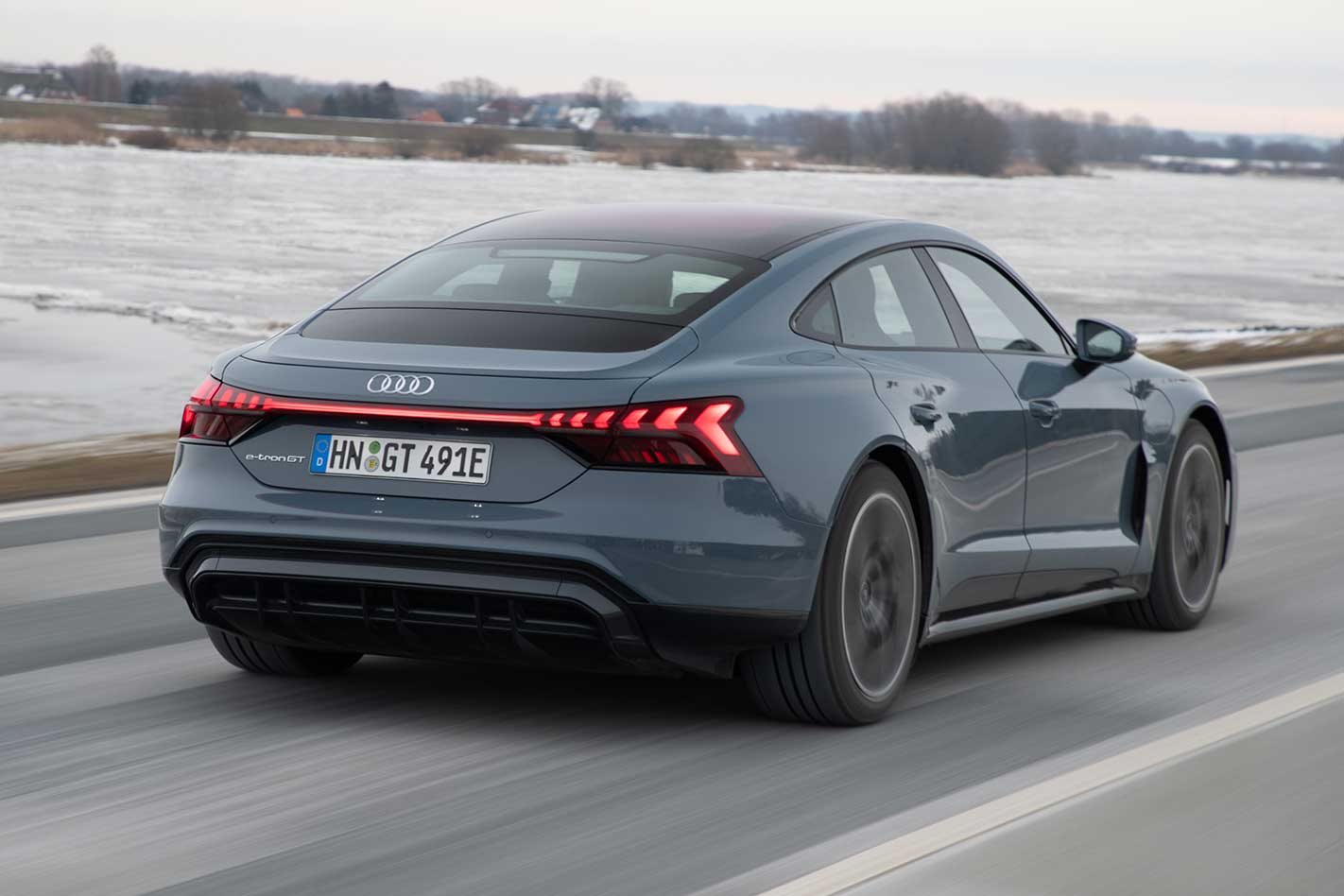
The e-Tron’s business-as-usual ethos continues to the exterior: Ingolstadt’s electric GT wears a Marc Lichte-tailored suit, and instead of looking like a Taycan at a court appearance, its unique design cues – from the Audi singleframe grille to the e-Tron light elements – move away from the Porsche’s sci-fi looks and add a dash of the familiar.
Inside, the e-Tron GT forgoes banks of haptic touchscreens, and strikes a reasonable compromise of proddable displays and real switchgear. The steering wheel could be from any Audi of the last five years, but it’ll help make the e-Tron GT feel less alien to early adopters.
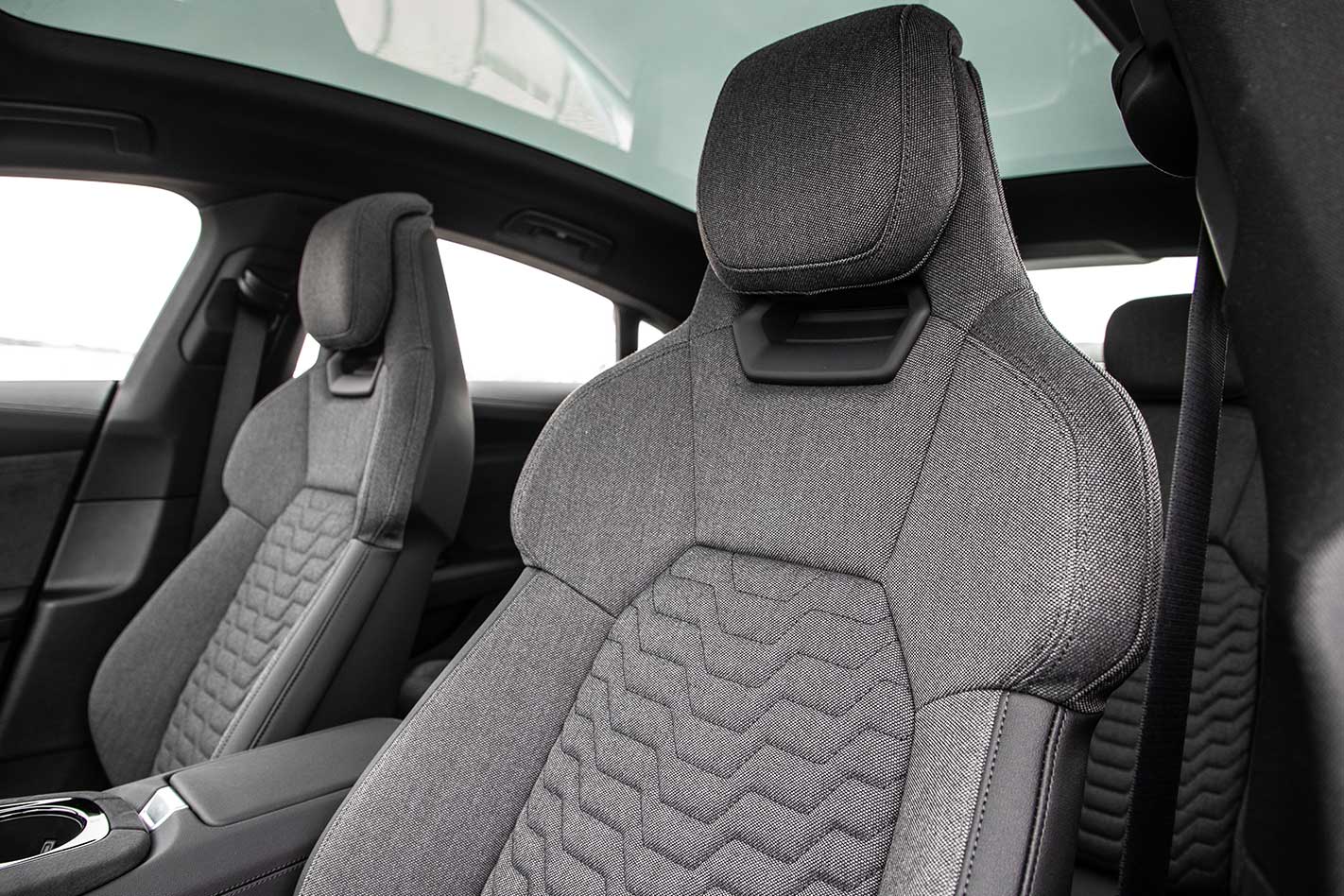
The standard e-Tron quattro is the most compelling of the two; on paper it has the longer range and the lower price, and it add all the comfort you’d want from a GT – with the inherent benefits an EV powertrain brings.
The range-topping RS is more muddled. In a bid to be sportier but softer, it’s based on an unwinnable compromise, and leaves itself open to some unfavorable comparisons.
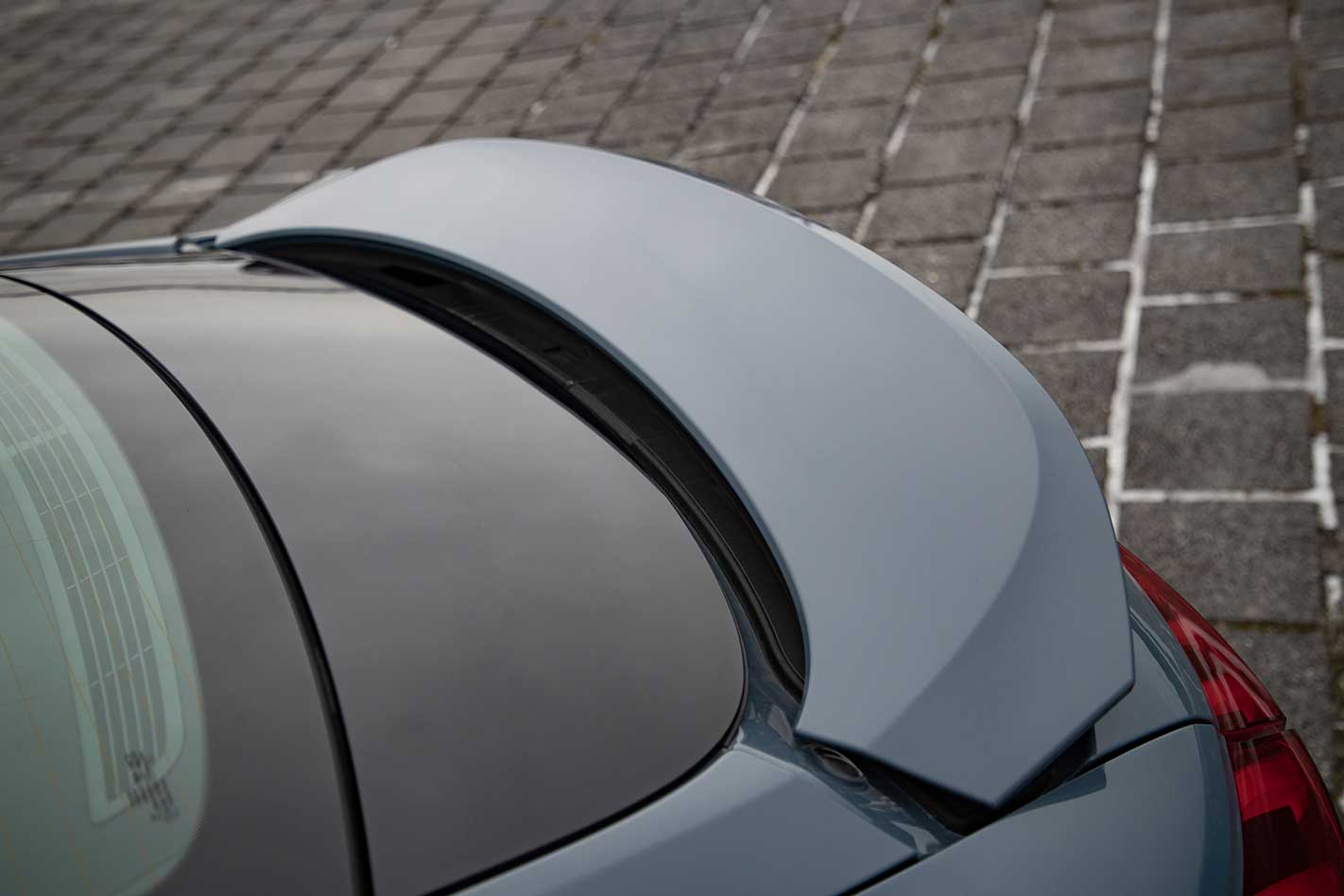
9.0/10
Pros: ride; refinement; EV powertrain; charge speed
Cons: price currently unknown; little else
Specifications
Body: 5-door, 5-seat hatchback Drive: all-wheel Battery: 93.4kWh (83.7kWh net) Power: 350kW (390kW overboost) Torque: 630Nm (640Nm overboost) Transmission: 2-speed Weight: 2276kg L/W/H: 4989/1964/1396mm Wheelbase: 2900mm Tracks: 1710/1694mm (f/r) Suspension: double-wishbones, adaptive dampers, air springs, anti-roll bar (f); multi-links, adaptive dampers, air springs, anti-roll bar (r) Wheels: 19 x 8.0-inch (f); 19 x 10.0-inch (r) Tyres: 225/55 R19 (f); 275/45 R19 (r) Price: $175,000 (estimate) On-sale: H2 2021



